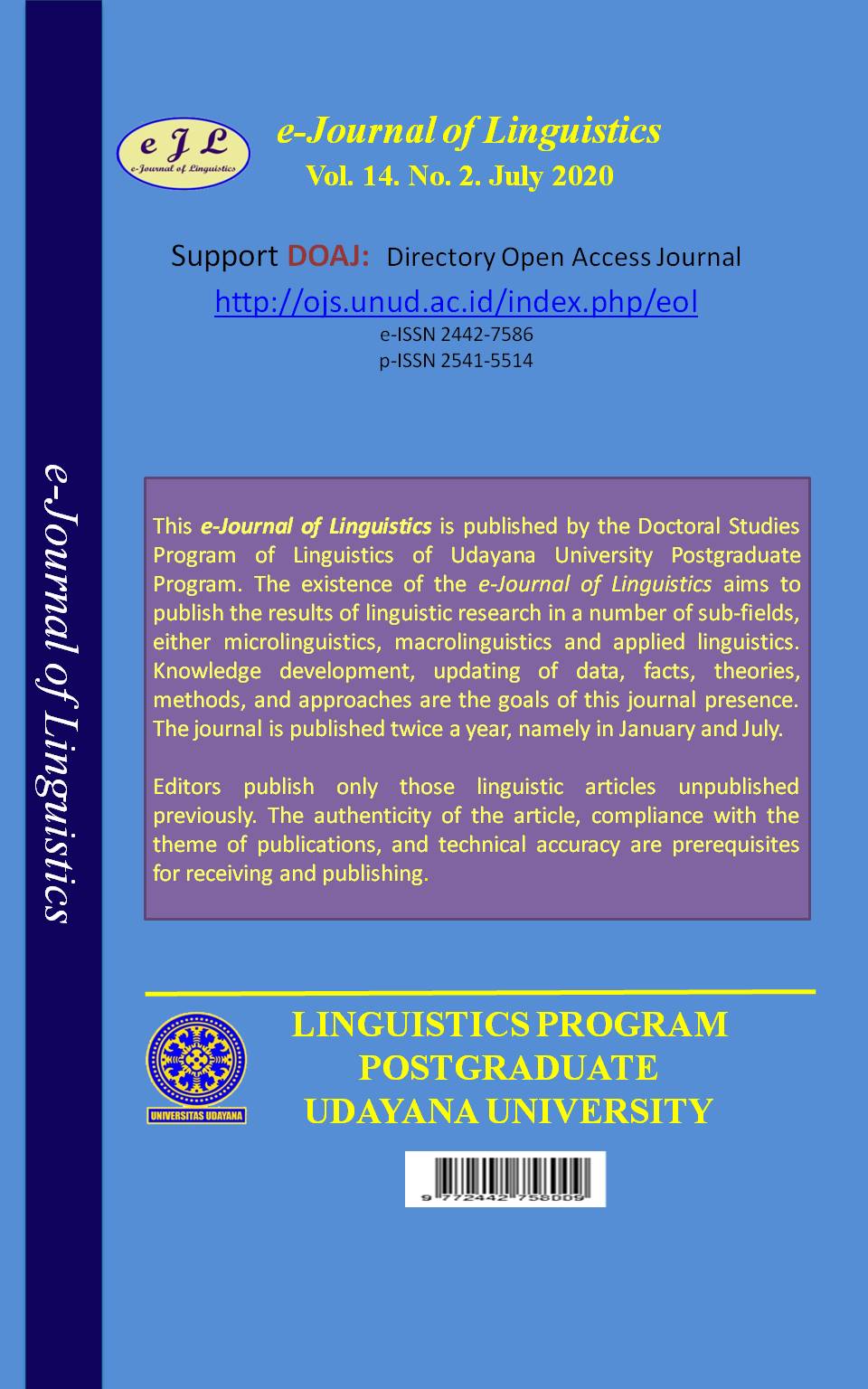A Case Study of English Affricate Consonants Realized by a Two-year-old Indonesian Child
Abstract
In English, the two affricate consonants are not owned by other languages. They are [d?] a voiced affricate like in the word jaguar, garage, and jeep, and [t?] a voiceless affricate like in the word chin, cheap, and check. These sounds are phonetic sequences consisting of a stop with a fricated release. For some EFL learners, especially children, producing those sounds are difficult because they don’t have a similar or same sound in their first or mother language like in Indonesian language. This study is aimed to explore the realization of English two affricate consonants produced by a two-year-old Indonesian child who speaks both English and Indonesian language. This qualitative case study shows a significant result on the voiced and voiceless post-alveolar consonant. The child couldn’t produce [d?] as in GA production in an initial sound of the word. She produced [j] sound instead, but she could pronounce it if the sound is in the final sound of the word. In contrast, she could pronounce [t?] as in GA production in both the initial and final sound of the word with ease. This study contributes helping English teachers to teach their students, especially children in their golden age, to pronounce English words and to contribute to the field of phonetics and phonology, specifically in teaching English pronunciations to EFL learners.
Downloads
References
Andi-Pallawa, Baso. (2013). A Comparative Analysis between English and Indonesian Phonological Systems. International Journal of English Language Education. ISSN: 2325-0887. Vol. 1, No. 3.
Bot, de Kees., Lowie, Wander., & Verspoor, Marjolijn. (2005). Second Language Acquisition: An Advanced Resource Book. New York. Routledge.
Carr, Philip. (2013). English Phonetics and Phonology. Oxford. Wiley Blackwell.
De Weijer, Jeroen van. (2014). Affricates in English as a Natural Class in Above and Beyond the Segments: Experimental Linguistics and Phonetics. John Benjamins Publishing Company. pp. 350-358 https://doi.org/10.1075/z.189.27wei.
Fitriana, R. A. & Agustina. (2018). Phonological Acquisition (Case Study on Indonesian Child). Advances in Social Science, Education and Humanities Research, Vol. 3, No. 1.
Fromkin, V., Rodman, R., & Hyams, N. (2018). An Introduction to Language. Cengage Learning.
Hutauruk, Bertaria Sohnata. (2015). Children First Language Acquisition at Age 1-3 Years Old In Balata. IOSR Journal Of Humanities And Social Science (IOSR-JHSS) Volume 20, Issue 8, Ver. V (Aug. 2015), PP 51-57 e-ISSN: 2279-0837, p-ISSN: 2279-0845.
Linse, Caroline T. (2005). Practical English Language Teaching: Young Learners. New York: McGraw-Hill.
Noermanzah. (2017). A 1.4 Year Old Child Language Acquisition (Case Study on a Bilingual Family). Parole: Journal of Linguistics and Education, Vol.5 No. 2, pp. 145-154. https://doi.org/10.14710/parole.v5i2.154.
Parker, Frank. (1985). Linguistics for Non-Linguists. Boston: College-Hill.
Pinter, Annamaria. (2006). Teaching Young Language Learners. Oxford: Oxford University Press.
Reid, Eva. (2016). Teaching English Pronunciation to Different Age Groups in Azykovedné, Literárnovedné a Didaktické Kolokvium XXXIXI: Zborník Vedeckých Prác a Vedeckých Stúdií. Bratislava: Z-F Lingua.
Risdianto, Faizal. (2017). A Phonological Analysis on the English Consonants of Sundanese EFL Speakers. Jurnal Arbitrer. ISSN: 2550-1011 Vol. 4 No. 1.
Simanullang, Musrafidin. (2018). The Effect of Applying Video on the Students’ English Pronunciation Accuracy at the Fifth Semester Students at the English Study Program of the Teacher’s Training and Education Faculty the University of Sisingamangaraja XII Tapanuli in Academic Year 2018/2019. International Journal of English Literature and Social Sciences (IJELS). ISSN: 2456-7620Vol-3, Issue-6, Nov - Dec, 2018.
Yavas, M. S. (2011). Applied English Phonology. Blackwell Pub.
Yin, R. K. (2003). Case Study Research Design. (Fourth edition). London: Sage Publications.

This work is licensed under a Creative Commons Attribution 4.0 International License











